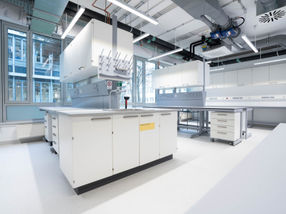New ISO standard for laser diffraction ‘much improves method development advice’ says Malvern
Advertisement
Malvern Instruments has welcomed the release of ISO13320:2009, a new standard for this key particle sizing technique. Building on a knowledge base that has advanced significantly over the preceding decade, ISO13320:2009 is an essential resource for instrument manufacturers and users alike. By emphasising applications and the need for well-defined procedures, it also clearly points the way for future developments.
Commenting on the publication of the new standard, Paul Kippax, Malvern’s Product Manager for Diffraction Products said, “Malvern has been happy to contribute expertise to shape this valuable document and is especially pleased that it includes much improved advice on method development and optical model selection. This reflects a marked growth in application knowledge in recent years. There is now substantial guidance to enable users to get the most from an investment in a laser diffraction analyzer. Looking to the future, the challenge for manufacturers is to reduce the burden of method development, making it easier for all users to fully exploit this knowledge base.”
Most read news
Other news from the department politics & laws

Get the chemical industry in your inbox
By submitting this form you agree that LUMITOS AG will send you the newsletter(s) selected above by email. Your data will not be passed on to third parties. Your data will be stored and processed in accordance with our data protection regulations. LUMITOS may contact you by email for the purpose of advertising or market and opinion surveys. You can revoke your consent at any time without giving reasons to LUMITOS AG, Ernst-Augustin-Str. 2, 12489 Berlin, Germany or by e-mail at revoke@lumitos.com with effect for the future. In addition, each email contains a link to unsubscribe from the corresponding newsletter.
































































